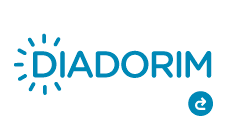LET’S GO! ANATOMY GAME: UMA METODOLOGIA ATIVA PARA O APRIMORAMENTO DO ENSINO DA ANATOMIA
Resumo
A Anatomia é uma disciplina bastante densa que pode gerar estresse, medo, falta de confiança e compreensão insuficiente. O uso de jogos interativos, visando o aprendizado ativo em vez do entretenimento, auxilia na consolidação do conhecimento e aumenta o interesse dos alunos. Objetiva descrever a elaboração de um jogo lúdico, que foi desenvolvido por tutores da disciplina de Anatomia Odontológica. Trata-se de um estudo descritivo, do tipo relato de experiência, sobre a vivência de tutores da disciplina de Anatomia Odontológica para o curso de Odontologia da Universidade Federal da Paraíba (UFPB). O jogo “Let’s Go! Anatomy Game” foi elaborado nas plataformas Wordwall e Jigsaw Planet, Google Forms e Google Slides, visando abordar os conteúdos teóricos ministrados na disciplina. No total, 15 alunos demonstraram interesse em receber apoio de tutores e participaram do jogo durante os períodos letivos de 2020.2 e 2021.1. Após a aplicação do jogo “Let’s Go! Anatomy Game”, foi contabilizado o percentual de acerto em cada desafio, definindo uma pontuação de 0 a 100% de acertos. Desse modo, observou-se que a média geral de pontos no jogo foi de 708,33; demonstrando um conhecimento aceitável. Desse modo, foi possível observar que a gamificação possibilitou uma abordagem leve do conteúdo e uma revisão dinâmica dos assuntos. Além disso, a elaboração dos jogos auxiliou os tutores no desenvolvimento de habilidades docentes, fortalecendo o interesse pela docência
Downloads
Referências
CHAVES, J. L. et al. A Tutoria como Estratégia Educacional no Ensino médico. Revista Brasileira de Educação Médica, v. 38, n. 4, p. 532-541, 2014. Disponível em: https://www.scielo.br/j/rbem/a/cdJMPmwVSgzBynMvGnWV3hc/abstract/?lang=pt
DETERDING, S.; KHALED, R.; NACKE, L.; DIXON, D. Gamification: Toward a definition. Chi, p. 12-15, 2011. Disponível em: http://gamification-research.org/wp-content/uploads/2011/04/02-Deterding-Khaled-Nacke-Dixon.pdf
DIAS, J. D. et al. Design e avaliação de um jogo educacional de anatomia e fisiologia digestória humana. SBC –Proceedings of SBGames, São Paulo, p. 288-294, 2016. Disponível em: https://www.sbgames.org/sbgames2016/downloads/anais/156951.pdf
DINSMORE, C. E.; DAUGHERTY, S.; ZEITZ, H. J. Student response to the gross anatomy laboratory in medical curriculum. Clinical Anatomy, v. 14, p. 231-236, 2001. Disponível em: https://pubmed.ncbi.nlm.nih.gov/11301472/
FONSÊCA, A. et al. A codificação por cores como ferramenta facilitadora no aprendizado da anatomia dos músculos do antebraço. Revista O Anatomista, v. 1, 36-44, 2020. Disponível em:https://www.researchgate.net/publication/343153156_A_CODIFICACAO_POR_CORES_COMO_FERRAMENTA_FACILITADORA_NO_APRENDIZADO_DA_ANATOMIA_DOS_MUSCULOS_DO_ANTEBRACO
GRAFAM, B. Active learning in medical education: strategies for beginning implementation. Med. Teach, v. 29, n. 1, p. 38-42, fev. 2007. Disponível em: https://pubmed.ncbi.nlm.nih.gov/17538832/
GREEN, R.A.; WHITBURN, L.Y. Impact of introduction of blended learning in gross anatomy on student outcomes. Anat. Sci. Educ., v. 9, n. 5, p. 422-430, 2016. Disponível em: https://pubmed.ncbi.nlm.nih.gov/26929149/
JABBAR, A. I. A.; FELICIA, P. Gameplay engagement and learning in game-based learning: A systematic review. Review of educational research, v. 85, n. 4, p. 740-779, 2015. Disponível em: https://journals.sagepub.com/doi/10.3102/0034654315577210
JANSSEN, A. et al. A little healthy competition: using mixed methods to pilot a team-based digital game for boosting medical student engagement with anatomy and histology content. BMC Med. Educ., v. 15, n. 173, 2015. Disponível em: https://pubmed.ncbi.nlm.nih.gov/26459198/
LONGHURST, G. J. et al. Strength, Weakness, Opportunity, Threat (SWOT) Analysis of the Adaptations to Anatomical Education in the United Kingdom and Republic of Ireland in Response to the Covid-19 Pandemic. Anatomical Sciences Education, v. 13, n. 3, p. 301–311, 2020. Disponível em: https://pubmed.ncbi.nlm.nih.gov/32306550/
MARCELLINO, C, N. Lazer e educação. 12ª. Campinas, São Paulo: Papirus Editora, 2007.
MICHAEL, R. Self-efficacy and future career expectations of at-risk adolescents: The contribution of a tutoring program. J. Community Psychology, p. 1-11, 2019. Disponível em: https://onlinelibrary.wiley.com/doi/abs/10.1002/jcop.22163
MORO, C.; PHELPS, C.; STROMBERGA, Z. Utilizing serious games for physiology and anatomy learning and revision. Adv Physiol Educ., v. 44, p. 505-507, 2020. Disponível em: https://pubmed.ncbi.nlm.nih.gov/32795126/
NASRI, N. M. et al. Mitigating the COVID-19 pandemic: a snapshot from Malaysia into the coping strategies for pre-service teachers’ education. Journal of Education for Teaching. v. 46, n. 4, p. 546-553, 2020. Disponível em: https://www.tandfonline.com/doi/abs/10.1080/02607476.2020.1802582?journalCode=cjet20
PASSOS, M. L. S.; ANDRADE, M. B.; ALMEIDA, E. O. F. O Desafio das Metodologias Ativas: construção de um jogo de Escape Room. INFORMÁTICA NA EDUCAÇÃO: teoria & prática, v. 24, n. 3 2021. Disponível em: https://seer.ufrgs.br/index.php/InfEducTeoriaPratica/article/view/109380/65964
PEREIRA, P. F. O.; FIUZA, P. J.; LEMOS, R. R. Aprendizado baseado em jogos digitais no ensino de anatomia utilizando gamificação: uma revisão sistemática da literatura. Criar Educação, v. 8, n. 1, 2019. Disponível em: https://periodicos.unesc.net/ojs/index.php/criaredu/article/view/5012
PURIFICAÇÃO, N. R. C. et al. Gamificação do ensino teórico de anatomia para o curso de farmácia da ufrn na pandemia da covid-19: relato de experiência. Arquivos do Mudi, v. 25, n. 2, p. 14-26, 2021. Disponível em: https://periodicos.uem.br/ojs/index.php/ArqMudi/article/view/59849/751375152528
RONDON, S.; SASSI, F. C.; ANDRADE, C. R. F. Computer game-based and traditional learning method: a comparison regarding students' knowledge retention. BMC Med. Educ., v. 13, n. 30, 2013. Disponível em: https://bmcmededuc.biomedcentral.com/articles/10.1186/1472-6920-13-30
RUSSI, A, C, R. Pedagogia da autonomia: saberes necessários à prática educativa. Conexões, Campinas, SP, v. 9, n. 2, p. 219-226, 2011. Disponível em: https://nepegeo.paginas.ufsc.br/files/2018/11/Pedagogia-da-Autonomia-Paulo-Freire.pdf
SANTOS, S. L. F. et al. (2018). Estratégias facilitadoras no processo ensino-aprendizagem em anatomia humana. Rev. Expr. Catól., v. 7, n. 2, p. 58-62, 2018. Disponível em: http://publicacoesacademicas.unicatolicaquixada.edu.br/index.php/rec/article/view/2511/pdf1
SILVA FILHO, F. C.; PEREIRA, A. C. O uso de jogos digitais para o ensino da anatomia humana: um relato de experiência. Research, Society and Development, v. 9, n. 9, e261996602, 2020.
SOUZA, H. C.; TOLEDO NETO, J. L.; BRAVO, D.S. The importance of anatomy practice using cadavers and newtechnologies in undergraduate biological science and nursing courses. Rev. Arg. de Anat. Clin., v. 8, n. 2, p. 80-86, 2016. Disponível em: https://www.researchgate.net/publication/306292964_THE_IMPORTANCE_OF_ANATOMY_PRACTICE_USING_CADAVERS_AND_NEW_TECHNOLOGIES_IN_UNDERGRADUATE_BIOLOGICAL_SCIENCE_AND_NURSING_COURSES
SUSI, T.; JOHANNESSON, M.; BACKLUND, P. Serious games - An overview. Technical Report HS- IKI -TR-07-001, School of Humanities and Informatics, University of Skövde, Sweden, v. 73, n. 10, p. 28, 2007. Disponível em: https://www.researchgate.net/publication/220017759_Serious_Games_-_An_Overview
TOPPING, K. Peer tutoring: Old method, new developments. Journal for the Study of Education and Development, v. 38, n. 1, p. 1-29, 2015. Disponível em: https://psycnet.apa.org/record/2015-11701-001
VAN GAALEN, A. E. J.; BROUWER, J.; SCHÖNROCK-ADEMA, J.; BOUWKAMP-TIMMER, T.; JAARSMA, A. D. C.; GEORGIADIS, J. R. Gamification of health professions education: a systematic review. Adv. Health Sci. Educ. Theory Pract., v. 26, n. 2, p. 683–711, 2011. Disponível em: https://pubmed.ncbi.nlm.nih.gov/33128662/
VLACHOPOULOS, D. COVID-19: Threat or opportunity for online education? Higher Learning Research Communications, v. 10, n. 1, p. 2., 2020. Disponível em: https://scholarworks.waldenu.edu/hlrc/vol10/iss1/2/
WEBB, T. P.; SIMPSON, D.; DENSON, S.; DUTHIE, E. Gaming used as an informal instructional technique: effects on learner knowledge and satisfaction. J. Surg. Educ., v. 69, n. 3, p. 330-334, 2012. Disponível em: https://pubmed.ncbi.nlm.nih.gov/22483133/
WOO, J. C. Digital Game-Based Learning Supports Student Motivation, Cognitive Success, and Performance Outcomes. Journal of Educational Technology & Society, v. 17, n. 3, p. 291-307, 2014. Disponível em: https://www.researchgate.net/publication/286063834_Digital_Game-Based_Learning_Supports_Student_Motivation_Cognitive_Success_and_Performance_Outcomes
DECLARAÇÃO DE ORIGINALIDADE E DIREITOS AUTORAIS
Declaro que o presente artigo é original, não tendo sido submetido à publicação em qualquer outro periódico nacional ou internacional, quer seja em parte ou em sua totalidade.
Os direitos autorais pertencem exclusivamente aos autores. Os direitos de licenciamento utilizados pelo periódico é a licença Creative Commons Attribution 4.0 (CC BY ): são permitidos o acompartilhamento (cópia e distribuição do material em qualqer meio ou formato) e adaptação (remix, transformação e criação de material a partir do conteúdo assim licenciado para quaisquer fins, inclusive comerciais.

Recomenda-se a leitura desse link para maiores informações sobre o tema: fornecimento de créditos e referências de forma correta, entre outros detalhes cruciais para uso adequado do material licenciado.

















